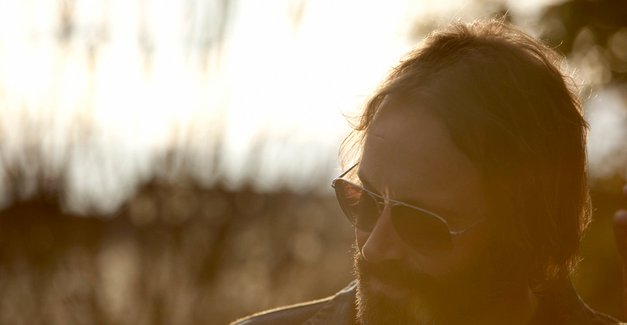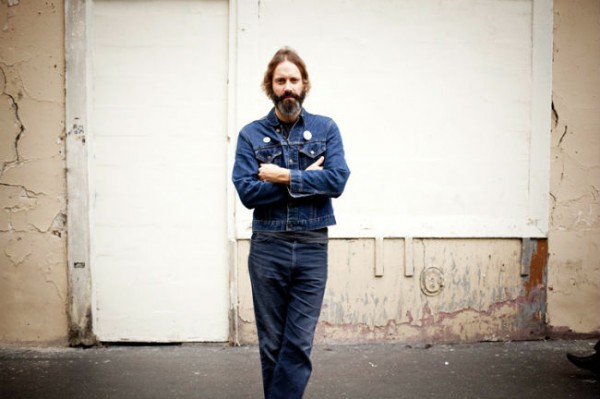From Sideman to the Spotlight
An Interview with Neal Casal
Words by Alex Napoliello — Southern California
Neal Casal has gained notoriety through his work with Ryan Adams and The Cardinals and the Black Crowes’ Chris Robinson. What many don’t know is that Casal has released 10 solo albums in nearly two decades, the most recent being Sweeten The Distance (Royal Potato Family). Written during his transition from the East Coast to the West, Casal’s latest record embraces a vagabond-like roughness with the warmth of a California sunset. From his home in Southern Cal, the Jersey-native talked shop on his newest endeavor, the not so pretty side of the music industry and working with Adams and Robinson.
What is the difference between Neal Casal the solo artist and Neal Casal who plays alongside Chris Robinson and Ryan Adams?
I don’t even know if it differs that much. It’s all like one big band to me. I’ve been making solo records for well over 15 years now. That was my primary focus in earlier times. I’ve branched out to play with other people just because I met so many friends playing music over the years that it just makes sense to do more things – it’s just too tempting not to. Obviously when I’m out playing my own stuff, the focus shifts a little towards me and I have to sing more, but I kind of take the same approach with everything.
Do you enjoy being the focus or would you rather be the guy off to the side of the stage?
Sometimes it’s a little bit of both. These days, I’m ready to step into my own thing a lot more. It kind of goes back-and-forth. I love it all, really. I view music as just something I want to do, whether I’m involved in someone else’s music or my own. I just want to be there doing good things. It’s really like anything — some days you don’t feel like going to your job, others you’re completely psyched for it.
Listening to the new record, Sweeten The Distance, it sounds like a very personal one for you.
The time those songs were being written was a pretty heavy transitional time for me. I was going through a lot: the Cardinals were ending, I was moving from the East Coast to the West. Moving across country is always tumultuous; it stirs up a lot (of emotions). There were a lot of things ending for me on the East Coast. My circle of friends there, when I moved, they kind of knew I wasn’t coming back. There was finality to that move for me that certainly affected the writing of the songs.
In the middle of my writing process, our Cardinals’ bass player, Chris Feinstein, passed away which was a really big deal. He was a close friend of mine. It’s not really a record about death or anything. I actually think it’s a quite positive record starting with the title track (“Sweeten The Distance”). It’s pretty personal, sure, I’m a singer/songwriter after all – and all the best and worst things that come along with that.
www.nealcasal.com
Given the amount of time spent in the music business, do you ever feel fatigue?
Of course, man. Speaking for myself, the word success is pretty humorous to me considering the amount of years I pretty much gave my work away for nothing – for no compensation at all. Some of the heartbreaks I have endured: getting dropped from record labels and not being able to get recognition where it’s needed and required, cancelled tours, bands breaking up, friends lost, record projects sinking down the tubes. I’ve seen my friends go through all these things, too. I’m just saying there’s a brutal side to life in music that a lot of people don’t see. I’ve struggled long and hard for the little bits of so-called ‘success’ that I’ve had.
That success is just looking at it from the outside. I guess my list of accomplishments at this point is starting to look like something that could be impressive, depending on who is looking at it; other people wouldn’t care at all or even know what it is that I’ve done. It all depends on how you’re looking at it.
Over the years, how have you evolved as a musician and a songwriter?
It’s just persistence. I’m now being rewarded for hanging in there and working on it. I’m over 20 years into this, and I always keep my eye on improvement. I always keep my eye on quality. It’s hard to quantify what exactly that is. I have some standards and I’m constantly refining those standards. After a certain amount of years, sticking with something, you almost become a real craftsman at it. It’s like a painter or any kind of person doing finely detailed work that has spent years in their shop. There comes a point where you cannot continue it unless you take that attitude. I want to be in a constant pursuit of excellence. I can live with that – I sleep well when I’m in that place.
Unlike other musicians, you have found a way to turn your photography into another profession – almost like a second job.
Everyone needs money, including me that’s for sure but it’s not about that. Joining the photography with music is being resourceful. That’s finding a way to stay really passionate and really creative and to keep that excitement that the party will no longer provide for me. Mixing photography with music is a way to keep it interesting and keep myself vital so I don’t stay stagnate playing the same old songs. That’s how I keep the flow going.


– Neal Casal

Were Ryan Adams & The Cardinals receptive to your idea of the photo book, A View Of Other Windows?
I didn’t propose to do it, that’s the thing. I didn’t propose it all. I was asked to do it, but not by Ryan (Adams) or the band or anyone else. From day one of being in The Cardinals, I documented the experience. No one ever questioned me taking photographs. Ryan was totally cool about it, allowed it and he trusted me, too. People saw my imagery and realized that I was doing some decent work and not taking a bunch of shitty photographs.
The way the book came about was I randomly met a book editor on the streets of New York, who I ended up showing my photographs to and the publishing company asked me to do a book. So that’s how it worked out.
I don’t know if I would have even pursued doing a book. I don’t think it was really on my list of dreams at that point. It was just a great affirmation of what I had been doing. It’s still hard for me to believe that that book happened in the way that it did. It was a really charming experience.
The way you tell the story, it almost seems like it was fate.
It was shocking to me. I really couldn’t even believe it. Abrams, the publishing company that released it, they’re a heavy-duty art publisher. If you look at some of the things they do, it wasn’t in my wheelhouse to think I could be on a roster like that. I didn’t pick up photography until I was well in my 30s. I have a lot of good friends who are serious pro photographers. It would be kind of presumptuous for me to put myself on their level – I would never do it. So it just happened that I made this huge leap in such a short period of time. It completely took me by surprise.
How does working with Chris Robinson differ from working with Ryan Adams?
Honestly, they’re two very different people. But rather than talk about the differences, it’s actually better — for me — to talk about the similarities. As well as doing my own work, I’ve been fortunate enough to be able to work with two really great singer and songwriters for the last 20 years. Being around guys like that is nothing but an inspiration. At any moment, either one of those fellas has the potential to walk in with an absolutely amazing song that can just knock you to your knees, and I get to be around that every day. I approach working with everybody in the same exact way, which is with as much openness as I can muster and just seeing how I can help those guys get to where they need to go.
www.nealcasal.com
TheWaster.com | Southern Cal
12.23.2012


